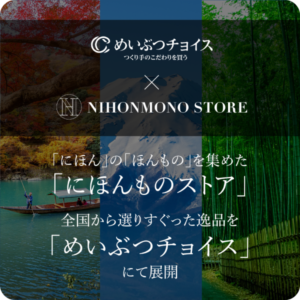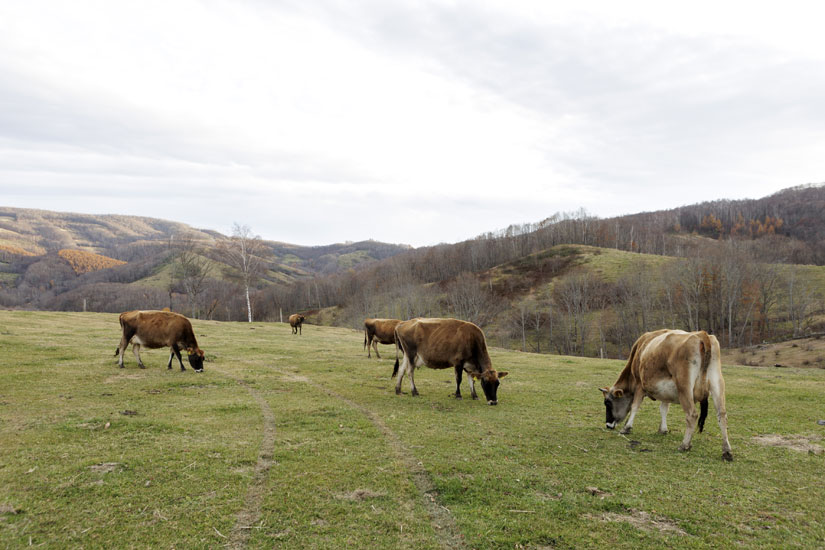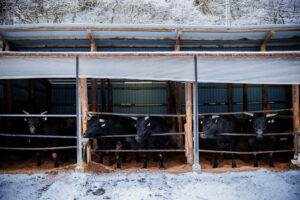Nakahora Farm is a pasture-farming dairy farm of mainly Jersey cows in the vast mountainous area of the Kitakami Mountains. The milk is pasteurized and non-homogenized at the company’s own milk plant, and is highly praised both inside and outside of the prefecture for its “rich flavor with a clean aftertaste.
Aiming for mountain dairy farming in his hometown
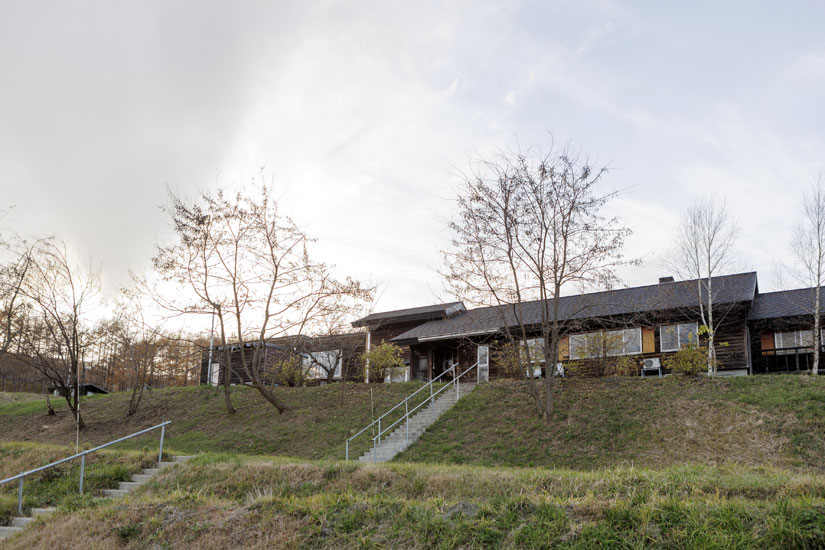
The Kitakami mountain range covers approximately 60% of Iwate Prefecture, with gently sloping mountains stretching from the center to the periphery. Nakahora Farm is located in a hollow 700 to 850 meters above sea level. It covers an area of 120 hectares, about 25 times the size of the Tokyo Dome. Here, 110 dairy cows, including calves, graze.
Nakahora Farm was established in 1984 by Tadashi Nakahora, a native of Iwate Prefecture, who settled in the Arigei district of Iwaizumi Town. While a student at Tokyo University of Agriculture, Mr. Nakahora learned about “Yamachi Dairy Farming,” a style of dairy farming advocated by Dr. Kyoji Naobara, a plant ecologist, and was shocked by it. In order to provide large amounts of milk at low prices, many dairy farmers in Japan today do not pasture their cows, but keep them in barns and feed them nutritious foreign grain feed. In contrast, “mountain dairy farming” is to plant wild buckwheat on mountains and let cows, which are herbivores, graze on the grass, thereby effectively utilizing the mountains, which cover about 70% of Japan’s land, for dairy farming and turning them into green grasslands. Furthermore, when one hears the word “grazing,” one tends to think that flat, wide grasslands are necessary, but cows can easily walk on slopes as long as they have grass, their favorite food. Thinking that this would make dairy farming possible even in the mountain forests of Iwate, where there are many steep slopes, Mr. Nakadora returned home after graduation and purchased his current farm, which had been put on the market by the “Kitakami Mountain Range Comprehensive Development Project. The project was to attract dairy farms to 17 cities, towns, and villages in eight regions of the prefecture, and the farm was a “build-to-order farm” that included a 50-hectare plot of land, various facilities, barns, and housing. Some of the equipment, such as a manure disposal machine, was unnecessary for mountain dairy farming, where cow manure is used to fertilize pastureland, and the farm was heavily in debt, but he made the decision to pursue his dream of “practicing pasture-based dairy farming in my hometown.
Why he chose Jersey cows
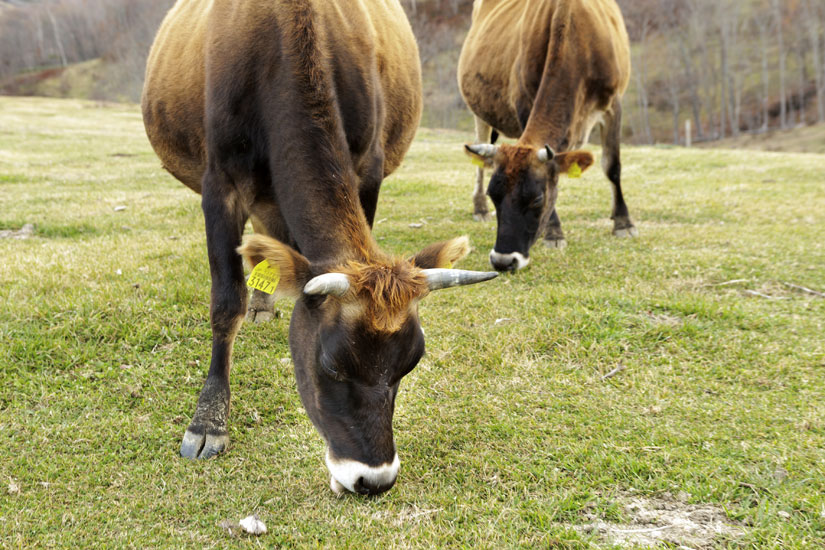
After settling in the area, Mr. Nakadora first cut down trees, put up fences around the farm to prevent the cows from escaping, and put 11 dairy cows out to pasture. The cows roam around and eat underbrush and leaves, which they eat up, leaving the soil bare. The cows’ manure and manure then became fertilizer, and eventually native wild grasses, such as wild buckwheat, began to grow. By repeating this process little by little, the pastureland with wild grass grew and the number of dairy cows increased. Dr. Naohara’s idea of the right balance between enough food for the cows and enough wild grass not to disappear due to overfeeding is “1.5 adult cows per hectare of pastureland,” and Nakahora Pasture follows this scale.
Making the Most of the Original Flavor of Raw Milk
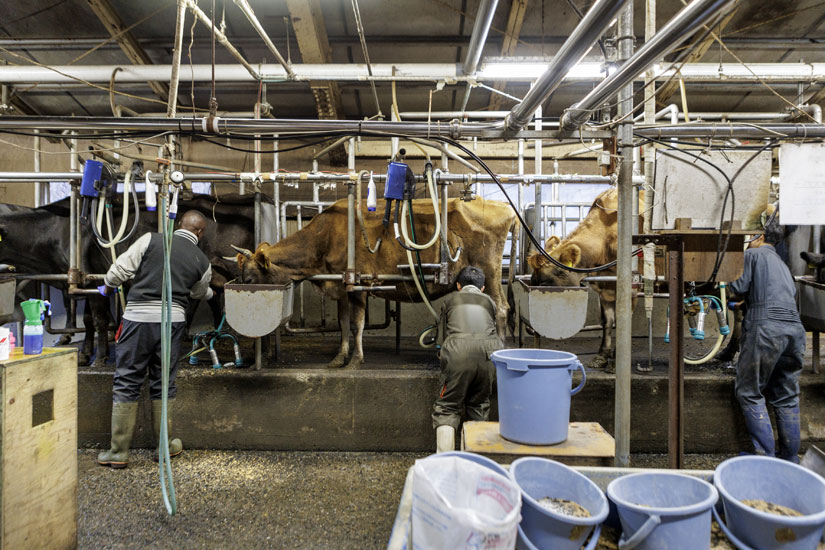
Cows at Nakahora Farm are pastured day and night throughout the year. They enter the barn only twice a day for milking. The rest of the time, from spring to fall, the cows are fed on wild grasses and wild oats in the pastureland, and in winter, when the pastureland is covered with snow, they eat silage made from fermented pesticide-free grass from their own pastureland and Japanese hay. Mating and birthing are done in a natural way. Breeding and births are done in a natural way. Even after giving birth, cows are breast-fed for up to two months, so both mothers and calves are stress-free. They are healthy both mentally and physically.
Pasteurization at 63°C for 30 minutes
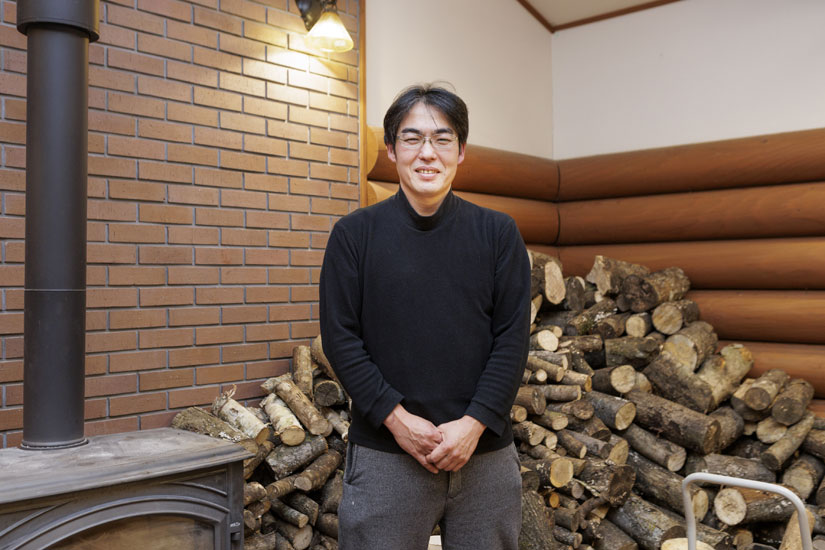
Nakahora Farm processes raw milk from such healthy cows into milk at its own milk plant and sells it. Mr. Nakahora shipped raw milk to an agricultural cooperative for seven years after settling in the area, but in 1987, the raw milk trading standard was changed to “fat content (percentage of fat in raw milk) of 3.5% or more,” and the purchase price of raw milk that did not meet the standard was reduced by about half. Nakahora Farm’s raw milk was not high in milk fat content due to the high amount of pastoral exercise, but from spring to fall, when the milk is fed on green grass with high water content, the milk fat content is even lower. Mr. Nakahora therefore felt a sense of crisis, saying, “I can’t run a business under this standard,” and decided to launch his own brand. With a loan from a bank, he built a milk plant and began producing milk. Incidentally, the dairy has since increased the ratio of Jersey cows to increase the fat content of its raw milk, which now ranges from 3.6 to 3.8% in summer and 4.3 to 4.5% in winter.
The ranch’s milk is characterized by its full-bodied flavor with a clean aftertaste. This is due to the fact that the milk is pasteurized at 63°C for 30 minutes. The pasteurization temperature and time change the proteins in the milk, causing it to lose its original taste. After much trial and error, we arrived at the legal limit of ’63°C for 30 minutes,'” explains Toru Makihara, who will replace Mr. Nakahora as head of the dairy farm in 2021. According to Makihara, the milk takes on a “matured flavor” as the days go by, and some customers enjoy the change in taste from the day of purchase to one week later.
Enjoy the “fresh cream” on the top of the bottle!
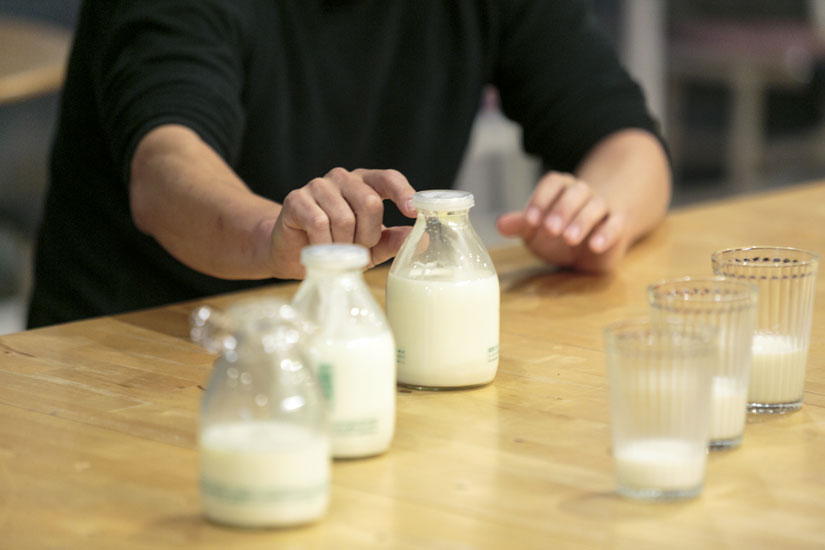
Another feature of Nakahora Farm’s milk is that it is non-homogenized milk. Homogenization” refers to the process of crushing the fat globules contained in milk into small pieces. The fat globules must be crushed before pasteurization in order to avoid scorching during the high-temperature pasteurization process (120°C for 2 seconds, etc.) for mass-distributed products from major dairy companies. On the other hand, the crushing of fat globules has the disadvantage of losing the original flavor of raw milk, so Nakahora Ranch chooses to use “non-homo” milk, saying, “We want our milk to taste close to raw milk. That is one of the reasons why our milk is said to have a rich taste. Also, as the days go by, the fat content floats to the top of the bottle, but this is fresh cream, so it is delicious eaten as is, and some customers even put it on bread,” says Makihara, proudly.
Aiming for “stable management” that can be passed on to the next generation
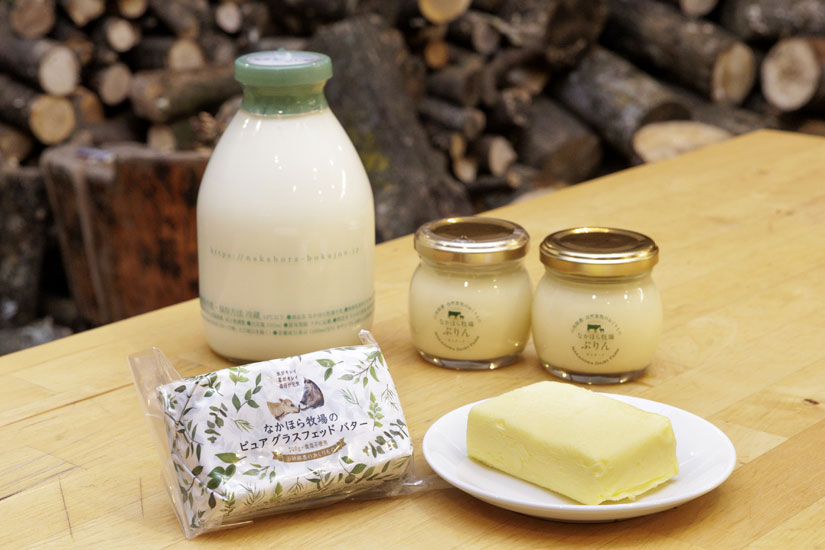
In addition to milk, Nakahora Farm’s milk plant also produces processed products such as ice cream, yogurt, butter, and pudding. Sales have expanded beyond Iwate Prefecture to Kanto, Kansai, Shikoku, and Kyushu, but business is still tight.
It is important for people to understand the value of our products.
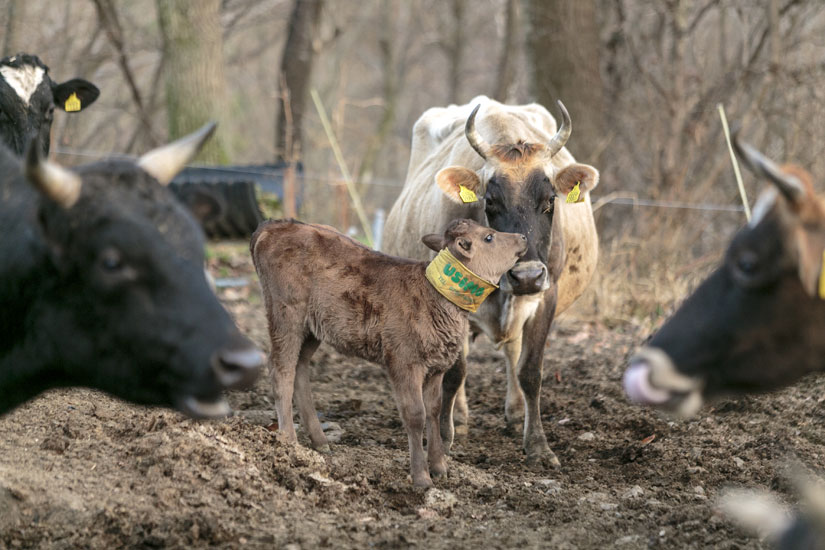
Mr. Makihara’s family used to be a dairy farmer raising 600 cows in a barn in the neighboring village of Tanohata, but the family later went out of business. He came to Nakahora Farm 13 years ago, and felt that he wanted to raise cows in this way. However, it is not possible to run the farm at a loss of more than 100 million yen a year, as is the case now. We need a management structure that can feed the family and be passed on to the next generation of young people,” he stated clearly.
To stabilize the business, Makihara believes it is necessary to increase sales by having consumers understand the value of the products. For example, some customers do not know that the fat content is what floats to the top of our milk bottles. The price of our milk is more than five times the price of regular milk, so unless they understand why, that is, that we are a pasture-based dairy farm that feeds mainly grass, pasteurized, and non-homo, they will not buy our milk. On the other hand, if they understand, they will buy it,” says Makihara. Together with his young staff and trainees, he shares his wisdom and aims to develop the dairy farm under the motto, “For the cows, for the mountains, and for the health of the consumers who keep our dairy products.
